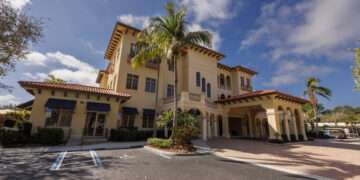The biggest news for transportation remains Direct Connect, the $54 million I-75 connector to Southwest Florida International Airport that opened in 2015. This year will be the first full test of how the overpass, which provides a more direct route to the airport, eases traffic on airport feeder roads for passengers and commuters. “It will serve transportation well into the future,” says Robert Ball, executive director of the Lee County Port Authority.
One major utility change could occur in 2016. Cape Coral’s 30-year franchise agreement with LCEC is set to expire on Sept. 30, 2016. One option for Cape is becoming a city-owned electric utility that could serve its residents.
The region’s water issues continue to be funded. The South Florida Water Management District in 2015 approved nearly $2 million to help fund projects that seek to improve water quality and flood protection, and to grow water storage. The funding includes $937,500 for the Lely Area Stormwater Improvements in east Naples, additional money ($6.7 million previously awarded) for a project working to improve the timing and distribution of fresh water entering the Rookery Bay National Estuarine Research Reserve, $400,000 to the city of Naples’ efforts to increase the availability of reclaimed water and offset the demand on traditional water sources by about 1 million gallons daily, $680,000 for Naples’ reclaimed water system expansion ($680,000) and $63,000 for drainage improvements in Marco Island.
FLIGHT PATTERNS:
Southwest Florida International is one of just two medium-sized airports in the country with a single runway (along with San Diego International Airport), so planners predict the facility will need another runway someday, but airline consolidation pushed off that date. “It is clear in the statistics. We have more passengers today, but fewer flights,” Ball says. The airport accommodates 20,000 fewer flights a year now, making a $300 million investment in a new runway unnecessary in the near term.
Instead of beginning the runway expansion now, as was planned at one time, the airport is in the process of designing a $45 million control tower that can serve the current runway and a future one. The pay-as-you-go project paves the way for steady growth in the number of passengers and amount of freight passing through the airport. “People probably don’t realize the amount of freight that travels by air and how important that is,” says Zachary Burch, Florida DOT’s spokesman in Southwest Florida.
While air travel is vital to South Florida’s tourism industry, the airport also serves the ever-growing online retail sector and traditional manufacturing. For example, flowers grown for European markets are trucked into Fort Myers and fly out via Air Berlin, while medical devices made locally by Naples-based Arthrex are shipped around the world.
BEYOND 2016:
Over the next several years, Florida DOT will continue connectivity by upgrading interchanges along the I-75 corridor. The interchange at Collier Boulevard (SR 951) in Naples is scheduled for construction in fiscal year 2020 at a cost of $56 million. The Colonial Boulevard interchange in Fort Myers is under design and has $3 million in right-of-way funding in fiscal year 2019. The Corkscrew Road interchange in Estero will follow.
Ball expects planners will continue to discuss rail and the possibility of connecting the region through the Seminole Gulf Railway corridor. “We need to be thinking in interconnected transportation,” Ball says. “It’s not just about air or sea or land. In the distant future—maybe around 2060—the big infrastructure news may involve a high way through the Heartland that would connect Southwest Florida with Orlando in a more direct route.”
Florida’s Future Corridors program, a collaboration of the Department of Transportation and local authorities, includes a study of an alternative to I-75 that would move people and freight through the Heartland. The highway might involve a connection to U.S. 27, as well as additional east-west connectivity. The plan is truly in its earliest stages, though, with only a general concept.
“We have to look at the corridor as a whole,” Burch says.




